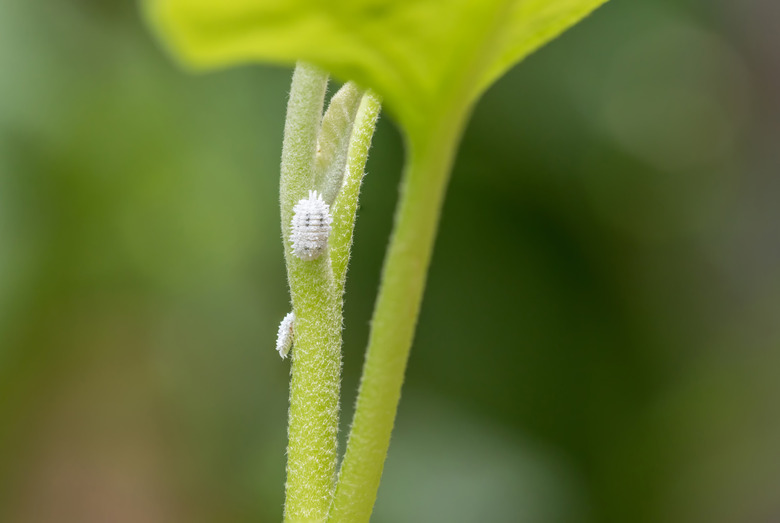Will Dish Soap Kill Mealybugs?
We may receive a commission on purchases made from links.
A mealybug might look like a harmless white fuzz ball, but it can do serious damage to your plants. If you suspect mealybugs are munching on your plants, using a dish soap solution can be a first plan of action to get rid of the pests. But you'll need to act quickly. This measure is only effective in the early stages of a mealybug infestation.
How to Identify Mealybugs
How to Identify Mealybugs
Mealybugs are common sucking pests that feed on plant phloem and can cause stunted growth, wilted or curled leaves, and yellowing leaves on your plant.
At first glance, a mealybug might not look like a bug at all but a tiny piece of white fuzz. The small white bugs on your plants may be stationary or may be slowly moving across the plant to feed. So if you see a colony of white fuzz on your plant leaves, then their infestation has matured.
The fuzzlike coating is actually a protective white waxy layer that covers the mealybugs' soft arthropod bodies. As the mealybugs develop, the coating becomes thicker and more protective.
Treating Mealybugs With Dish Soap
Treating Mealybugs With Dish Soap
If you spot just a few mealybugs at a young point in their lifecycle, then dish soap can be a gentle approach to removing them that won't harm your plants. However, an insecticidal soap spray will likely be required for more established mealybug colonies.
At the first sign of mealybugs, quarantine your plant. Place it outside or away from your other indoor plants to prevent the bugs from spreading to other plant hosts. If the plant is strong and established, give it a good douse with a hose to physically remove any mealybugs that have been hiding in nooks and crannies of the plant.
Mix 1 tablespoon of liquid dish soap into 1 quart of filtered water and pour the solution into a spray bottle. Use a mild dish soap and avoid soaps that are ultra concentrated. Test the mealybug dish soap solution on a small area on the underside of the leaf to make sure it doesn't damage the plant. If the plant shows no signs of leaf burn after 24 to 48 hours, then you have the go-ahead to treat the plant with dish soap. Spritz the plant with the dish soap solution and carefully wipe each leaf with a soft, dry cloth.
Why Dish Soap Is Effective
Why Dish Soap Is Effective
The dish soap application can suffocate mealybugs, and wiping with a cloth can physically remove the pests from the plant. Dish soap is particularly effective on young mealybugs that haven't developed a thick, protective armor yet. Many mealybug species take 23 to 75 days to reach maturity before laying eggs and dying off, so if you catch just a few pests before a full-blown infestation has occurred, then dish soap is a good first approach before reaching for harsher chemicals.
If dish soap alone is not sufficient and the mealybugs continue to feast on your plant, then a reasonable next measure would be to use a rubbing alcohol and dish soap solution. This solution can help dissolve a more mature mealybug's protective waxy coating.
Preventing Mealybug Infestations
Preventing Mealybug Infestations
Sometimes, a mealybug infestation explodes and conquers a plant before you get a chance to stop it in its tracks. You can save your plants from becoming a mealybug buffet by taking a few measures before you ever bring home a new plant. Mealybugs are commonly introduced to plants as a result of an infected plant being brought into the home or garden.
Mealybug prevention involves carefully inspecting every plant before purchase. Mealybugs tend to tuck away into stem crotches and leaf folds where they won't be readily seen. Once you've picked up a new plant, keep it away from your established plants for about a week so you can observe if any pests begin to show while keeping your other plants free from infestation.
